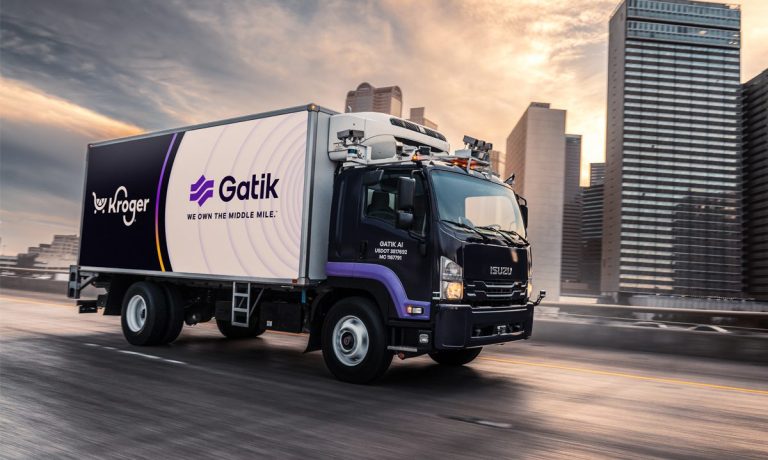
Deploying autonomous trucks, Kroger is the latest grocer to leverage automation to meet delivery demand.
On Wednesday (March 15), autonomous vehicles company Gatik announced that Kroger, the nation’s largest pure-play grocer, is leveraging its self-driving box trucks to transport products from the retailer’s eCommerce fulfillment center in Dallas, Texas to stores.
“We’re deeply familiar with operating our autonomous fleet within the Dallas ecosystem, and we’re very excited to bring that experience to support Kroger in its mission to reshape the future of goods delivery,” Gatik CEO and Co-founder Gautam Narang said in a statement.
The trucks will go live in the second quarter. Through this partnership, the grocer aims to boost the speed and lower the cost of fulfilling delivery orders, meeting greater demand and boosting profit margins while also increasing customer loyalty.
“It’s super important to us that we’re repeatable, we’re on time, and that we deliver that fresh full service that [customers are] looking for,” Mike Baker, head of final mile at Kroger, commented in the video announcement. “Through this collaboration with Gatik, we’re able to be quicker in our deliveries and focus more on the customer service side of things, which ultimately leads to happier customer and repeat customers.”
Indeed, the grocer’s delivery business is expanding. The company said in its fourth-quarter 2022 financial results that the channel has been leading eCommerce growth, with its 12% year-over-year increase in digital sales led by a 22% uptick in delivery. This demand is helped by the grocer’s efforts to drive adoption of its Boost membership, offering no-fee deliveries for a set monthly or annual cost.
Kroger is not the only grocer leveraging automation to increase its ability to meet demand. Walmart, for instance, has been partnering with Gatik for years. Moreover, grocers including Kroger and Walmart as well as SpartanNash, Ahold Delhaize and others have been utilizing automated fulfillment centers to meet eCommerce demand.
Moreover, some grocers and tech providers are even trying out robotic delivery vehicles to cut the labor cost typically associated with the channel. For instance, French supermarket chain Carrefour, which has more than 13,000 stores across nearly 40 countries, began testing robotic grocery delivery in Belgium earlier this year. Plus, at the end of last year, Uber Eats announced its robotic delivery efforts in the United States, bringing its partnership with autonomous vehicle creator Cartken to Miami.
Indeed, finding ways to make the economics of delivery work can be key to building customer loyalty. Research from PYMNTS’ study “Big Retail’s Innovation Mandate: Convenience and Personalization,” created in collaboration with ACI Worldwide, which drew from a survey of 300 major retailers in the U.S. and U.K., found that 76% of grocers think consumers would be very or extremely likely to switch merchants if they were not able to order products for delivery.
Overall, digital engagement with grocers is on the rise. PYMNTS’ study “Changes in Grocery Shopping Habits and Perception,” which drew from a December survey of more than 2,400 U.S. consumers, reveals that 45% of grocery shoppers buy groceries online at least some of the time. Additionally, 7% of grocery shoppers do so all the time, a 36-fold increase from pre-pandemic.